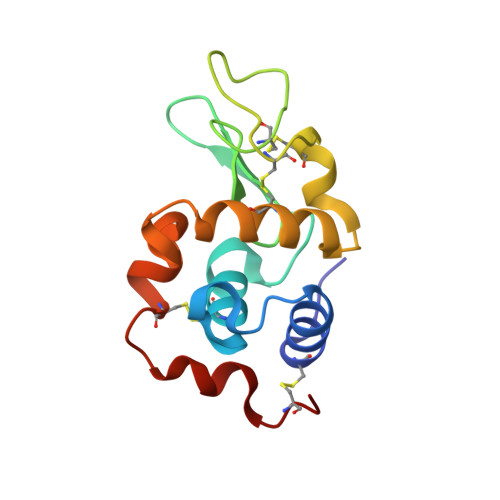A standardized technique for high-pressure cooling of protein crystals.
Quirnheim Pais, D., Rathmann, B., Koepke, J., Tomova, C., Wurzinger, P., Thielmann, Y.(2017) Acta Crystallogr D Struct Biol 73: 997-1006
- PubMed: 29199979
- DOI: https://doi.org/10.1107/S2059798317016357
- Primary Citation of Related Structures:
5O6N, 5O6Q - PubMed Abstract:
Cryogenic temperatures slow down secondary radiation damage during data collection from macromolecular crystals. In 1973, cooling at high pressure was identified as a method for cryopreserving crystals in their mother liquor [Thomanek et al. (1973). Acta Cryst. A29, 263-265]. Results from different groups studying different crystal systems indicated that the approach had merit, although difficulties in making the process work have limited its widespread use. Therefore, a simplified and reliable technique has been developed termed high-pressure cooling (HPC). An essential requirement for HPC is to protect crystals in capillaries. These capillaries form part of new sample holders with SPINE standard dimensions. Crystals are harvested with the capillary, cooled at high pressure (220 MPa) and stored in a cryovial. This system also allows the usage of the standard automation at the synchrotron. Crystals of hen egg-white lysozyme and concanavalin A have been successfully cryopreserved and yielded data sets to resolutions of 1.45 and 1.35 Å, respectively. Extensive work has been performed to define the useful working range of HPC in capillaries with 250 µm inner diameter. Three different 96-well crystallization screens that are most frequently used in our crystallization facility were chosen to study the formation of amorphous ice in this cooling setup. More than 89% of the screening solutions were directly suitable for HPC. This achievement represents a drastic improvement for crystals that suffered from cryoprotection or were not previously eligible for cryoprotection.
- Molecular Membrane Biology, Max Planck Institute of Biophysics, Max-von-Laue-Strasse 3, 60438 Frankfurt am Main, Germany.
Organizational Affiliation:



















